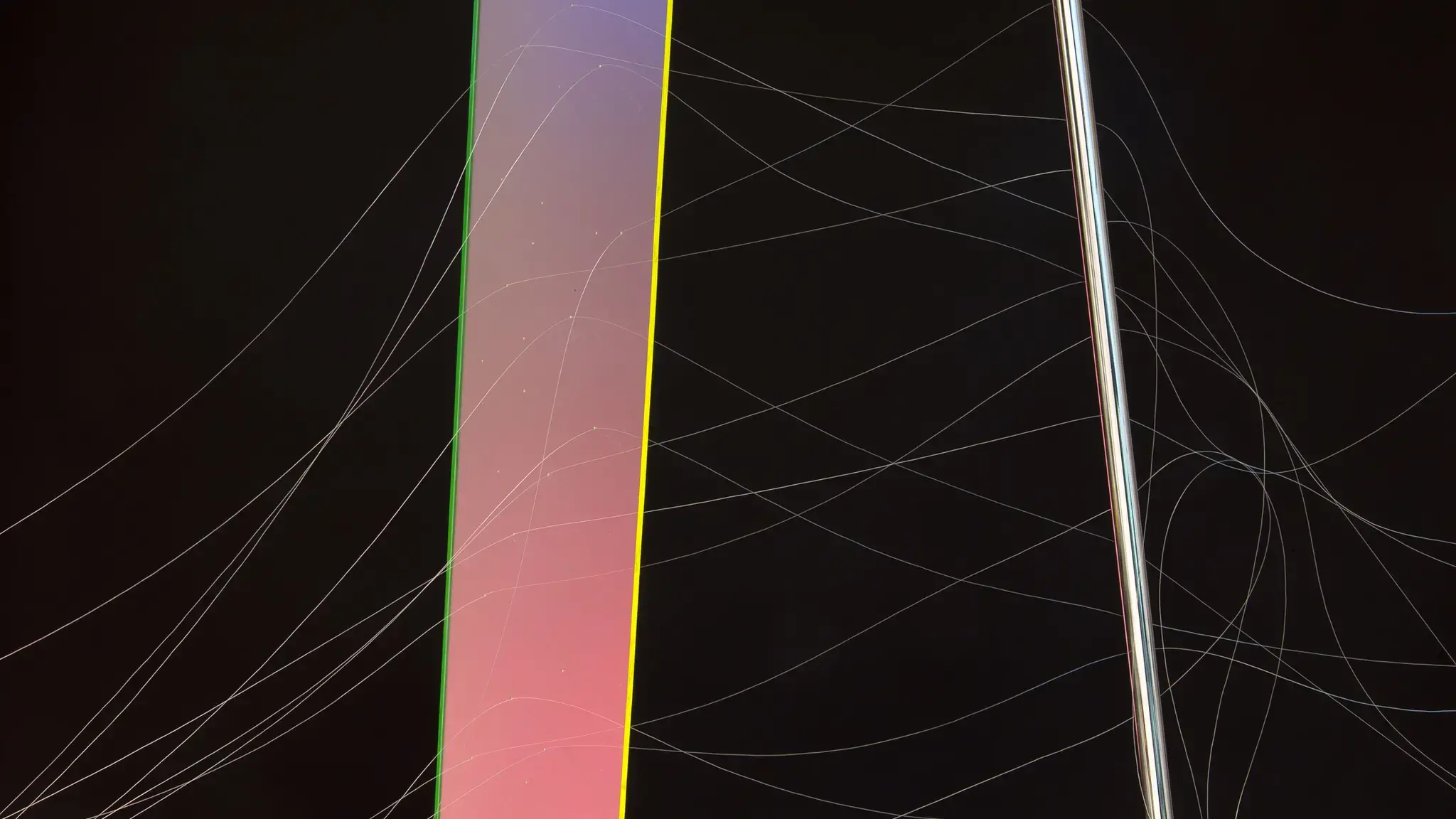

In conjunction with the Center-funded Barbara Kasten: Stages, organized by the Institute of Contemporary Art (ICA) at the University of Pennsylvania and on view through August 16, we explore the topic of artistic influence. In the piece that follows, 2014 Pew Fellow Brent Wahl reflects on his career beginnings and recalls how Kasten’s Construct works helped him “make some sense of the forces of the postmodern climate of the 1980s.” Wahl then demonstrates how his 2013 archival pigment print, At Odds With a Reflection, employs what the artist calls a “Kasten-inspired disruption.”
I arrived in New York City to attend the Pratt Institute in 1989, and I remember very clearly standing in The Strand bookstore on 12th and Broadway and finding the Abbeville Press book Fabrications: Staged, Altered, and Appropriated Photographs (1988). Recently released, the publication presented the work of artists working with photography in unconventional ways. Barbara Kasten’s Architectural Site images were mesmerizing, and prompted me to familiarize myself with her work.
In time, it was her early Construct works (starting in 1979) that really got my attention. I was drawn to their extreme precision, structure, and playfulness; they seemed like a tongue-in-cheek commentary on modernism. I asked myself, “Who combines colored gel lighting, mirrors, glass wall blocks, and corrugated plastic roofing into Constructivist-inspired compositions? Who would gently reference the still life tradition, using mostly subject-less forms with the occasional classical reference sprinkled in, and tie it all together with wizard-like technical clarity?” Barbara Kasten did, and her work helped me to make some sense of the forces of the postmodern climate of the 1980s.
In Construct XIX, from 1982, Kasten uses classic geometric shapes, linear forms, and mirrors to fracture the space and move us around the image. The byproducts of these elements—the shadows and the reflected light— delicately tie all the objects together. But for me, the most alluring aspect of this image (aside from Kasten’s nod to Constructivism) is the simple way that she uses the mirrors to take us visually ‘through’ the two-dimensional picture plane, inviting us to look into another dimension. As soon as we start to fall into the illusion—when a splash of color or some out-of-place linear form interrupts the image at an unpredictable angle—we are abruptly reminded of Kasten’s sleight of hand. At this point, we can choose to remain on the surface, or, if we are patient, slip back again into the illusion. Either way, the shifts in perception are surprising and satisfyingly disruptive.
In At Odds With a Reflection (2013), I employ a Kasten-inspired disruption. One of the main things I learned from her work is how to photographically alter space by way of a cutout or blockage. Here, two vertical forms serve to mysteriously divide the mostly dark picture plane. Is the form on the left flat or angled? Are we looking through it or is it a reflection? The only clues we have to respond to these questions are the wires that penetrate the form— where the eye is drawn in by the transitioning color but is then invited to address its relationship to the assertive chromed object on the right. This image asks questions about structure and tension. It acknowledges the use of simple materials and makes an attempt to construct an elegant dialogue out of very little—a Kasten-like move indeed.